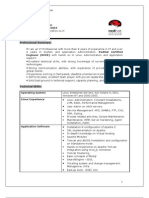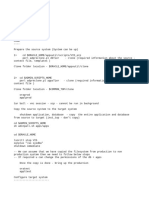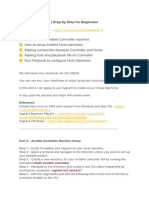0% found this document useful (0 votes)
84 views15 pagesAnsible Notes
The document provides a comprehensive overview of configuration management, focusing on Ansible as an automation tool. It covers installation, architecture, playbooks, variables, error handling, and roles, along with practical examples and commands. Additionally, it discusses the use of YAML for playbook creation and the importance of managing configurations efficiently through automation.
Uploaded by
rahuly2205Copyright
© © All Rights Reserved
We take content rights seriously. If you suspect this is your content, claim it here.
Available Formats
Download as TXT, PDF, TXT or read online on Scribd
0% found this document useful (0 votes)
84 views15 pagesAnsible Notes
The document provides a comprehensive overview of configuration management, focusing on Ansible as an automation tool. It covers installation, architecture, playbooks, variables, error handling, and roles, along with practical examples and commands. Additionally, it discusses the use of YAML for playbook creation and the importance of managing configurations efficiently through automation.
Uploaded by
rahuly2205Copyright
© © All Rights Reserved
We take content rights seriously. If you suspect this is your content, claim it here.
Available Formats
Download as TXT, PDF, TXT or read online on Scribd
/ 15

























































































